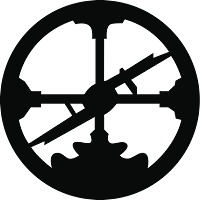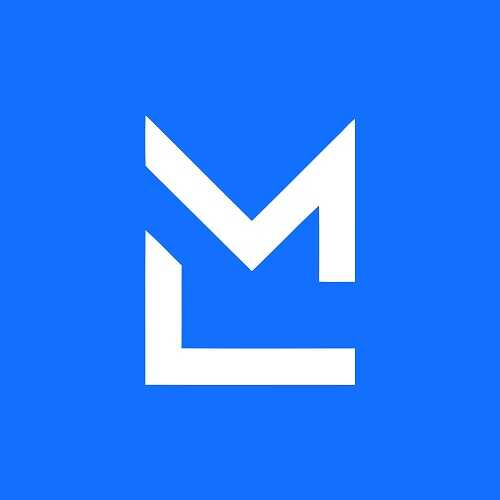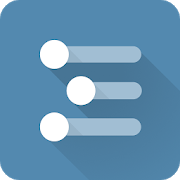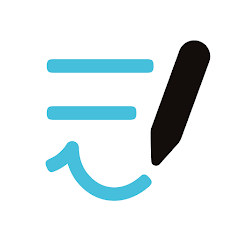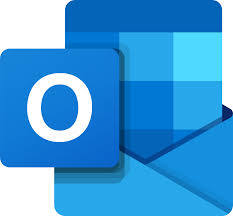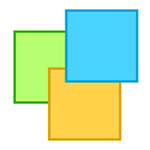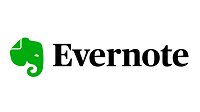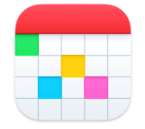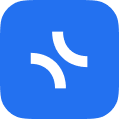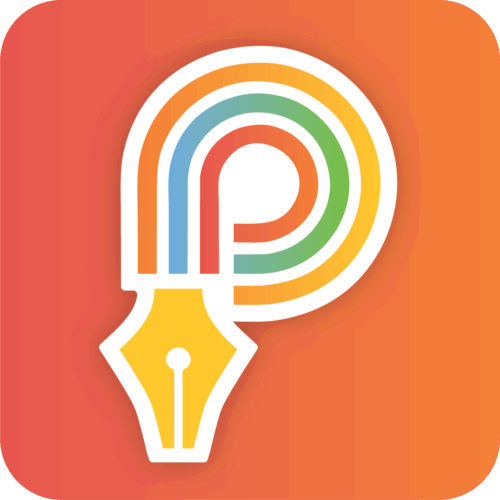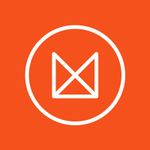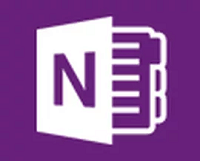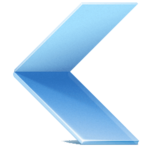Yes, most note-taking software is compatible with a variety of devices and platforms, including smartphones, tablets, laptops, and desktops. This feature enables users to effortlessly access and edit their notes from any device, making it ideal for on-the-go use and keeping notes up to date. However, before using the software, make sure it is compatible with the devices and operating systems you are using.
List of 20 Best Note Taking Software
Welcome to Roam Research is a note-taking software for streamlined research and long-term organization. With its easy-to-use interface, it works just like a standard word processor or list. But what sets Roam Research apart is its ability to visually...Read More Roam Research
Zuunote is the Markdown writing platform that simplifies document creation for all. Enjoy a hassle-free writing experience with no installations, editor toolbars, or split-panes to worry about. Take advantage of our local-first, offline-first approac...Read More Zuunote
MinutesLink - the perfect virtual meeting assistant powered by AI. Effortlessly integrated with Google Calendar, this personal aide records and transcribes every detail, creating inclusive meeting minutes for effortless reference. Ideal for professio...Read More MinutesLink
WorkFlowy is an efficient and user-friendly online note-taking and organization tool. Its streamlined outlining format enables users to effortlessly create lists, nested bullet points, and notes to better structure and manage information. With WorkFl...Read More WorkFlowy
GoodNotes is a premium note-taking app designed for use on iPads and iPhones. Its exceptional interface and diverse range of features have made it a must-have for users who want to easily create, organize, and annotate digital notes, documents, and s...Read More GoodNotes
DeepNotes is a note-taking software designed to provide unparalleled security through its end-to-end encryption. Its endless canvas and user-friendly navigation make it the ideal platform for organizing and jotting down your thoughts and ideas. Addit...Read More DeepNotes
Outlook by Microsoft is a email platform designed to enhance communication and productivity. Its seamless integration with calendars, tasks, and contacts makes it invaluable for both personal and professional use. Featuring a user-friendly interface...Read More Microsoft Outlook
MindMeister is online mind mapping tool trusted by a thriving community of 7 million users. It offers a choice between traditional mind map layout and org chart mode to cater to different mapping needs. All mind maps are securely saved on the cloud a...Read More MindMeister
Discover the power of Dynalist solution for optimizing tasks, projects, and ideas. With its smooth outlining, live collaboration, and advanced search capabilities, this versatile platform is perfect for both professionals and students. Say farewell t...Read More Dynalist
Notezilla is a sticky notes application for Windows and mobile devices. Effortlessly attach notes to anything, access them from anywhere, and share with ease. Boost your organization and productivity with Notezilla. Try it now and see for yourself. S...Read More Notezilla
Diigo is a online tool for saving, tagging, and annotating web pages, PDFs, and other online content from any device and location. With its advanced features, you can easily bookmark, organize, and share your research with others, create personalized...Read More Diigo
Evernote is a collaboration solution tailored for all types of businesses. It enables employees to effortlessly create projects, delegate tasks, monitor progress, and organize schedules from any location and at any time. Stay constantly connected wit...Read More Evernote
Bloks is a productivity tool powered by AI. Say goodbye to overwhelm and hello to efficiency as Bloks effortlessly takes notes, organizes tasks, and condenses meetings into concise summaries. With Bloks by your side, you can focus on achieving your g...Read More Bloks
Fantastical is a calendar app that seamlessly syncs with all your devices. With its cutting-edge natural language feature, time zone compatibility, and robust task management capabilities, staying organized has never been easier. Its intuitive interf...Read More Fantastical
xTiles solution for organizing your thoughts and ideas. With the ability to jot down notes on cards and arrange them with tabs, xTiles makes it effortless to capture and expand on your ideas in one convenient platform. Prioritizing simplicity, visibi...Read More xTiles
Plottr is a writing organization tool. Trusted by professional, emerging, and novice writers alike, this software helps keep your book on track and complete with ease. Its visually appealing design and efficient features make Plottr the top choice fo...Read More Plottr
MindMaple is a mind map software that takes mind mapping to the next level. Designed specifically for project management and brainstorming, this intelligent tool allows for effortless idea sharing, effective communication, and organized arrangement o...Read More MindMaple
Milanote solution for creative minds looking to streamline their projects and ideas visually. With an intuitive interface and support for multiple file types, this powerful tool is perfect for both individuals and teams. Say goodbye to chaos and hell...Read More Milanote
OneNote solution for effortless document management. Seamlessly create and share unlimited notebooks with its versatile modules. Stay connected with others through smooth email integration. Simplify your document management process and save valuable...Read More OneNote
CintaNotes is Windows note-taking software that streamlines information management. With its user-friendly interface, you can effortlessly capture and organize your notes. The built-in tools automatically sort your notes for quick and efficient acces...Read More CintaNotes
Learn More About Note Taking Software
- What Is Note Taking Software?
- What Are The Recent Trends In Note Taking Software?
- Benefits Of Using Note Taking Software
- Important Factors To Consider While Purchasing Note Taking Software?
- What Are The Key Features To Look For In Note Taking Software?
- Why Do Businesses Need Note Taking Software?
- How Much Time Is Required To Implement Note Taking Software?
- What Is The Level Of Customization Available In Note Taking Software?
- Which Industries Can Benefit The Most From Note Taking Software?
- Conclusion
What Is Note Taking Software?
Note-taking software is a computer tool for capturing, organizing, and storing notes and information in a virtual format. It is a simple and effective approach to manage information, whether for personal, academic, or corporate reasons. One of the primary characteristics of note-taking software is the ability to make and save notes in a variety of formats, including text, photos, audio, and even movies.
This enables a more adaptable and thorough method of capturing information, making it easier to recall and refer to later. Another advantage of note-taking software is its organizational capabilities. Users can create various folders, tags, and categories to conveniently organize and retrieve notes. This is especially important for students and professionals who must keep track of a significant amount of information.
Furthermore, note-taking software frequently includes additional capabilities like cloud storage, device syncing, and collaborative tools. These capabilities enable easy access to notes from anywhere and collaborative editing, making it an ideal tool for team projects and virtual meetings. When looking to buy note-taking software, there are a few things to consider. First, consider the user interface and convenience of use. The software's interoperability with various devices and operating systems, as well as its storage capacity and price plans, should then be evaluated.
What Are The Recent Trends In Note Taking Software?
Note-taking software has evolved throughout time to fit users' changing demands and preferences. In recent years, various developments and trends in this category have significantly improved the note-taking experience. As a buyer, you must stay up to date on current trends in order to make an informed decision.
Here are some of the most recent trends in note-taking software to look out for:
1. Integration Of Cloud Services: One notable trend in note-taking software is the incorporation of cloud services such as Google Drive, Dropbox, and OneDrive. Users can access their notes from any device, and they are always backed up in case the device fails. This connectivity also allows you to easily share notes with others, making cooperation more effective.
2. Applications Of Artificial Intelligence (AI): Another trend in note-taking software is the incorporation of artificial intelligence (AI) to improve note-taking skills. AI-powered capabilities like as automated note organizing, text recognition, and voice-to-text transcription make taking notes more convenient and efficient. This trend has increased the precision and organization of notes, making them more valuable for productivity.
3. Digital Ink Technology: Digital ink technology is increasingly used in note-taking software, particularly in apps developed for tablets and touch-screen devices. This technology allows users to write, draw, and annotate notes using a stylus or their fingertips, resulting in a more natural and intuitive experience. Some software also provides a range of digital pen types and ink colors to help you personalize your note-taking experience.
4. Focus On Cross-Platform Compatibility: With the development of remote work and the use of many devices, note-taking software is increasingly focusing on cross-platform interoperability. This implies that users may access their notes effortlessly across several devices, such as desktops, laptops, tablets, and smartphones. This trend has made taking notes more convenient, particularly for people who constantly switch between devices.
5. Focus On Security And Privacy: Given the growing number of cyber risks, most consumers now prioritize data security and privacy. As a result, note-taking software now includes advanced security features such as end-to-end encryption, biometric authentication, and password protection. This trend ensures that users' notes remain secure and inaccessible to unauthorized users.
Benefits Of Using Note Taking Software
Individuals, students, and professionals can utilize note-taking software to digitally organize their thoughts, ideas, and information. Taking notes has never been easier or more efficient thanks to technological advancements.
Here are some important advantages of using note-taking software.
1. Organizational Efficiency: One of the key advantages of using note-taking software is the added level of organization it provides. Individual notes, ideas, and information can be difficult to track when using standard pen and paper note-taking. However, note-taking software allows you to create many notebooks, categories, or tags to save and organize your notes in a logical manner. This allows you to rapidly find and get the information you require without spending time turning through pages.
2. Accessibility From Anywhere: Another advantage of using note-taking software is that you may access your notes from anywhere. Unlike physical notes, which are limited to a certain area, digital notes are accessible from any device with an internet connection. So, whether you're at home, in the library, or at work, you can simply access, edit, or add to your notes on any device, making it a practical and efficient choice for busy people.
3. Enhanced Collaboration: Note-taking software also enables easy cooperation with others. You may share your notes with coworkers, classmates, or friends, making it ideal for collaborative projects and studies. This allows everyone to contribute to the same collection of notes, avoiding the need for several versions and the confusion produced by different formats. Furthermore, some note-taking software supports real-time collaboration, allowing many users to modify and view the same note concurrently.
4. Digital Organization And Customization: Note taking software allows you to effortlessly adjust the format, layout, and design of your notes to meet your specific needs. You can enhance the visual appeal and engagement of your notes by including photographs, tables, charts, or even audio or video clips. Furthermore, digital notes can be easily searched, allowing you to quickly identify specific themes or information inside your notes.
5. Backup And Synchronization Options: Finally, most note-taking software has backup and syncing features, ensuring that your notes are always safe and easily accessible. This way, if you lose your smartphone or mistakenly delete your notes, you may easily restore them from a backup or synchronized account. This functionality is also useful when switching between devices or collaborating with others, as everyone has access to the most recent version of the notes.
Important Factors To Consider While Purchasing Note Taking Software?
Note-taking has become a crucial part of our everyday lives, whether for work, school, or personal reasons. With the growth of technology, taking notes has gotten easier and more efficient thanks to note-taking software. However, with so many options on the market, it can be difficult for customers to select the ideal one for their requirements.
In this buyer's guide, we'll go over the most crucial elements to consider when selecting note-taking software.
1. Compatibility. The first and most important element to consider is compatibility. Make sure the note-taking software works with the device and operating system you're currently using. The majority of note-taking software is compatible with both Windows and Mac, but it is always a good idea to check before purchasing.
2. User-Friendly Interface: Note-taking software should have an easy-to-use and understandable interface. Look for tools like drag and drop, voice dictation, and adjustable formatting options to make your note-taking experience easier and more efficient.
3. Syncing And Cloud Storage: In today's digital age, it is critical to have note-taking software that supports syncing and cloud storage. This allows you to view your notes from anywhere, on any device, and ensures that they are always backed up in case of technological difficulties.
4. Organizational Capabilities: Note-taking software provides a variety of organizational capabilities, including the ability to create folders, tags, and categories. When selecting software with adequate organizing capabilities, keep your note-taking technique in mind as well as the level of organization required.
5. Cross-Platform Compatibility: If you use various devices for note-taking, you should choose software that is cross-platform compatible. This means that you can easily view and edit your notes from whatever device you like.
6. Music And Image Support: Sometimes words are insufficient to explain our ideas, thus we need to integrate music or photos in our notes. To provide a more thorough and diverse note-taking experience, select note-taking software that supports audio and image attachments.
7. Productivity Features: Many note-taking apps include extra productivity features like task management, reminders, and interaction with other productivity tools. Consider your needs and select software with the necessary productivity features to help you stay organized and efficient.
8. Security And Privacy: Because taking notes frequently involves sensitive and personal information, security and privacy must be prioritized. Look for software that has encryption, password protection, and other security features to secure the safety of your notes.
What Are The Key Features To Look For In Note Taking Software?
When looking for the best note-taking software, there are a few important characteristics to consider. These tools will not only improve your note-taking experience, but will also keep you organized and efficient.
Here are the main characteristics you should look for in note-taking software.
1. Cross-Platform Compatibility: With the growing use of different devices, it is critical to select note-taking software that works with a variety of operating systems and devices. This will allow you to access your notes wherever you go, whether on your desktop, tablet, or smartphone.
2. Organization And Customisation Options: Look for software that allows you to categorize and tag your notes for quick retrieval. It should also provide customization possibilities, like as folder creation, color-coding, and labeling, to suit your individual note-taking style.
3. Syncing And Backup Capabilities: Losing essential notes might be disastrous. Choose software that has automatic syncing and cloud backups to ensure that you never lose your important notes.
4. Search Feature: A reliable search tool is essential for rapidly locating specific notes. Look for software that lets you search for keywords, phrases, and even handwritten text in your notes.
5. Collaboration Features: If you routinely work on group projects or share notes with others, select software that supports collaboration. This may include the ability to share and edit notes in real time, offer comments, and assign tasks.
6. Handwriting And Drawing Tools: If you like to take handwritten notes, opt for software with advanced handwriting and drawing features. These may include the ability to translate handwriting to text, make annotations, and create diagrams.
7. Integration With Other Apps And Tools: Look for software that works with the programs and tools you already use. This could include email, calendar, or task management software, which will help you streamline your routine. When comparing note-taking software, keep these crucial aspects in mind. Consider your specific note-taking requirements and select the software that best meets your needs. With the correct note-taking software, you can stay organized and productive while never forgetting a crucial detail again.
Why Do Businesses Need Note Taking Software?
Note-taking software offers firms a great tool for organizing and managing information. It is a critical tool for enterprises of all kinds, from start-ups to major corporations.
Here are the main reasons why organizations use note-taking software.
1. Streamline And Consolidate Information: Using note-taking software, organizations can save all of their notes in one place, making it easier to access and manage critical information. This eliminates the need for disorganized paper notes or various digital documents, saving time and minimizing confusion.
2. Improve Efficiency And Productivity: By allowing employees to rapidly scribble down notes and ideas, firms can keep organized and on track. It also enables for easy collaboration and note sharing among team members, which increases productivity and efficiency.
3. Stay Organized And On Track: Note-taking software generally includes tools such as reminders, task lists, and tags to help organizations stay organized and on top of their to-do lists. This can help organizations fulfill deadlines and remain focused on their objectives.
4. Collect All Types Of Information: From meeting notes to project plans to research findings, note-taking software enables businesses to collect information in a variety of formats such as text, photos, and audio. This ensures that no critical information is lost or overlooked.
5. Access Notes Anytime, Anywhere: Most note-taking software includes cloud storage, which allows businesses to access their notes from any device with an internet connection. This is especially handy for firms with remote teams or employees who travel regularly.
6. Improve Collaboration And Communication: Note-taking software enables team members to collaborate and share notes in real time. This can boost communication and streamline procedures, resulting in improved teamwork and outcomes.
7. Securely Store And Safeguard Important Information: Note-taking software frequently includes security features such as password protection and encryption, which ensure that sensitive information is safe and secure from cyber threats or data breaches.
How Much Time Is Required To Implement Note Taking Software?
The time required to implement note-taking software varies based on the software chosen and the user's requirements. However, in general, the implementation procedure can be finished in a few straightforward steps. First, determine which note-taking program is best for you. To make an informed decision, you can conduct research on several solutions, compare features and pricing, and read customer reviews.
The next step is to sign up for and create an account with the program of your choice. This phase can usually be finished in a few minutes. Once your account is set up, you may need to configure the software to meet your individual requirements. This could involve adding categories or labels, enabling reminders or notifications, and changing the style and design. Once the basic setup is complete, you may begin entering your notes into the app.
This could take some time if you have a significant number of existing notes to transfer over. However, due to the simplicity and effectiveness of a digital note-taking system, this step can frequently be finished faster than traditional techniques. Overall, the time necessary to deploy note-taking software will be determined by its complexity and level of customization. However, with most modern note-taking software, the installation process can be accomplished in a few hours or less.
What Is The Level Of Customization Available In Note Taking Software?
Note-taking software is intended to provide users with a simple and structured way to take digital notes. One of the most important advantages of note-taking software is the level of customization available to its users. This enables people to personalize their note-taking experience to their specific requirements and tastes. The level of customisation in note-taking software varies substantially depending on whatever software you select.
Some programs provide simple customization options like font style and color, but others provide a wide range of complex customization tools. The most frequent customization options in note-taking software include the ability to select a preferred note layout, such as a grid or list view. Users can often modify the size and color of their notes, as well as add labels and tags to categorize them.
More extensive customization features may include the ability to set reminders and due dates for specific notes, as well as to create custom templates for commonly used note types. Some note-taking software also allows users to customize the appearance of their notes by inserting photographs, drawings, and other content. Furthermore, some note-taking software has complex organizational features including the ability to create folders and subfolders to further categorize notes and make them easier to find when needed.
Users may also be able to alter the layout of their folders and notes within the app, providing a more personalized and straightforward experience. Furthermore, note-taking software frequently allows users to sync their notes across devices, providing a consistent experience regardless of which device they are using. This level of personalization enables users to access their unique notes from any device, making it simple to keep organized and productive on the go.
Which Industries Can Benefit The Most From Note Taking Software?
Note-taking software has become an indispensable tool for enterprises, organizations, and individuals alike. Note-taking software allows you to organize your thoughts and ideas as well as capture vital information in a handy and effective manner. While the advantages of note-taking software are clear in any field, some industries can gain the most from its use.
In this buyer's guide, we'll look at the top industries that can benefit most from note-taking software.
1. Education Industry: Note-taking software is a game changer in the education sector. With the increased use of technology in the classroom, note-taking software enables students to take notes electronically, removing the need for pens and paper. It also provides a more structured and searchable manner to save notes, making it easier for students to study and review. Furthermore, note-taking software can be combined with other learning resources, such as presentation and document sharing platforms, to improve the overall learning experience.
2. Corporate Industry: In today's fast-paced corporate world, note-taking software is invaluable. It enables simple and effective note-taking during meetings, conferences, and brainstorming sessions. With features like real-time collaboration, teams may collaborate on notes and instantaneously share them with one another, improving teamwork and productivity. Furthermore, note-taking software can be linked to project management tools, making it easier to keep track of projects and deadlines.
3. Healthcare Business: Note-taking software can considerably improve the healthcare business, particularly patient care. Doctors and nurses can utilize note-taking software to safely capture patient information, medical histories, and other critical data. This not only enhances the accuracy and accessibility of patient records, but it also facilitates communication among healthcare providers. Furthermore, note-taking software can be used to take notes during medical conferences and seminars, ensuring that critical information is not overlooked.
4. Legal Sector: Note-taking software is a useful tool in the legal sector, where extensive documentation is required. Lawyers, paralegals, and legal assistants can use note-taking software to document crucial case information, client meeting notes, and research findings. This not only helps to organize information, but it also makes it easier to find certain notes. Furthermore, note-taking software can help legal teams communicate on case notes, particularly in complicated and multi-party situations.
5. Journalism Industry: Journalists, reporters, and writers can all profit from note-taking software. They can use it to take notes on interviews, research findings, and narrative ideas. Voice-to-text technologies enable writers to swiftly and accurately transcribe audio interviews into text. It also provides for easy organizing of information, making it easier for writers to refer to their notes while writing. Furthermore, note-taking software can be connected with writing and publishing tools to simplify the writing process.
Conclusion
To summarize, note-taking software has become an indispensable tool for both individuals and enterprises, providing a plethora of features and benefits that boost productivity and organization. Following extensive research and comparison, it is evident that the best note-taking software will differ depending on individual requirements and tastes.
Evernote and OneNote provide a complete and versatile solution, including the ability to upload multimedia files and collaborate with others. Simplenote and Google Keep are fantastic options for a basic, distraction-free approach. Alternatively, Bear and Notion's configurable note-taking features appeal to creative and visual thinkers. When choosing a note-taking software, consider the user interface, cross-device compatibility, and integrations with other products.
It is also critical to compare the pricing structures and subscription alternatives provided by each product. Finally, be sure the note-taking software you chose meets your personal needs and helps you achieve your productivity goals. We hope this buyer's guide helped you make an informed selection. Happy note-taking!
Note Taking Software FAQ's
Can Note Taking Software Be Accessed Across Multiple Devices And Platforms?
Is Note Taking Software Future-Proof And Adaptable To Emerging Technologies Like AI, Blockchain Or IoT?
Yes, note-taking software is always growing and adapting to accommodate new technologies like artificial intelligence (AI), blockchain, and the Internet of Things (IoT). This enables more advanced capabilities like voice-to-text transcription, automatic note organizing and categorization, and even interaction with smart devices for smooth note-taking. As technology advances, note-taking software will evolve to remain relevant in an ever-changing digital context.
Is There A Free Trial Offered To Assess Note Taking Software Before Committing?
Yes, many note-taking software companies allow a free trial period in which customers can evaluate the product before committing to a paid membership. This allows customers to become acquainted with the software's features, interface, and overall functionality and assess whether it satisfies their requirements. The period of the free trial varies each supplier, but it normally spans between 7 and 30 days. Take advantage of the free trial to ensure an informed conclusion.
Does Note Taking Software Offer Data Security Features And Meet Regulatory Compliance Standards?
Yes, most note-taking software includes data security features like encryption, password protection, and secure remote access, which protect your notes from unauthorized access. Furthermore, many note-taking software companies adhere to high legal standards such as GDPR and HIPAA, guaranteeing that your information is secure and protected. Before selecting note-taking software, make sure to review their security and compliance methods to assure the safety of your data.
Can Note Taking Software Integrate Seamlessly With Existing Tools And Platforms?
Yes, most note-taking software supports easy interaction with existing products and platforms such as Microsoft Office, Google Drive, and Evernote. This allows users to effortlessly access and save their notes in their preferred platform, eliminating the need for manual transfer. It also facilitates collaboration by allowing you to share notes across many platforms.

